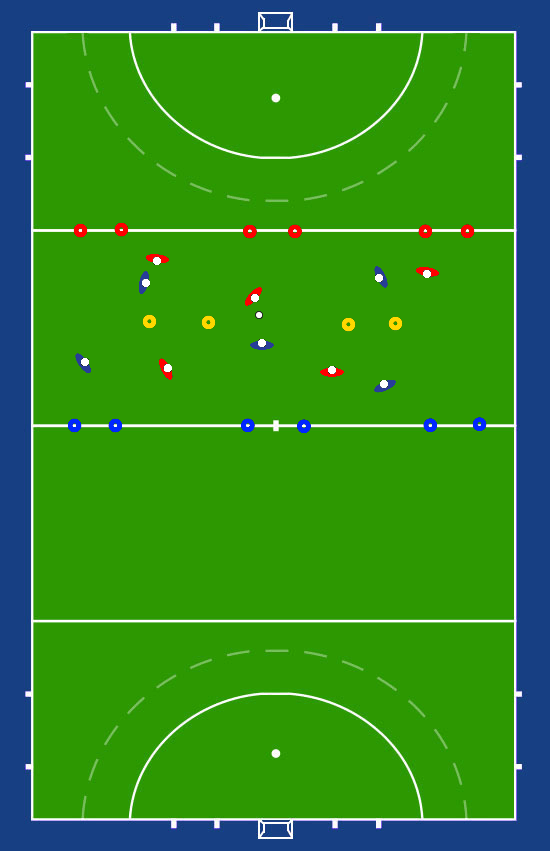Hockey drills
- Passing:
- push, slap, hit, overhead, running lob
- Receiving:
- FH: left hand forward, walk/run into the bal, open- closed control
- BH: receive with a high backhand run into direction of the ball
- Note: receive always on the move
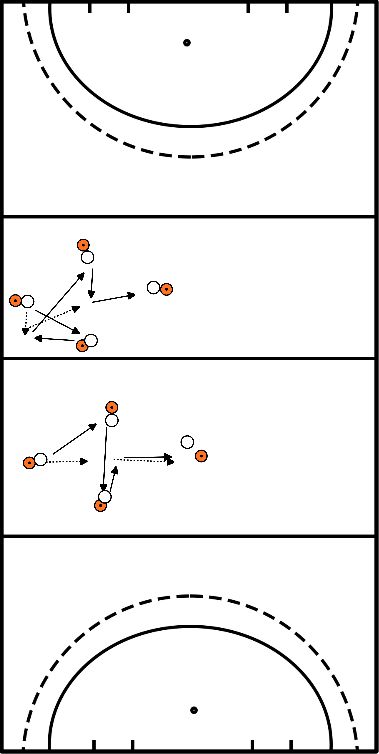
- Purpose; passing over large distances, while running. Finishing and tackleback.
- A plays long pass to B,
- B drives the ball to the right and plays through to C who shoots at goal.
- Once the shot has been completed, the next player on A passes to D
- and D starts a dribble towards the goal (scoring past penalty spot),
- C defends this attack.
- Rotation: A1BCDA2
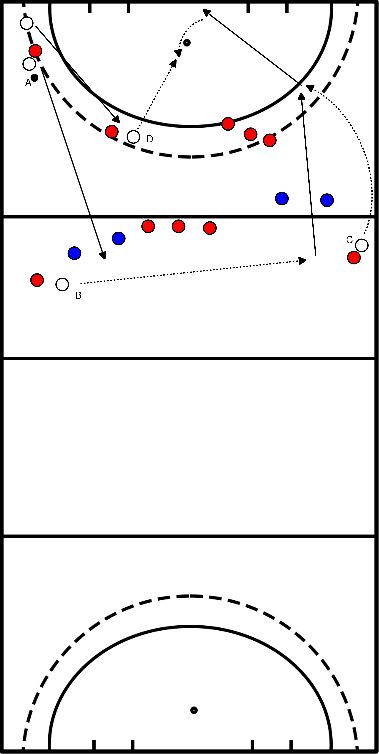
- Defender plays the ball to the right back.
- Right half pulls in and right front goes deep.
- Defender gives a deep pass on the right front.
- Right front turns away and plays the ball back on the midfielder.
- Midfielder puts the ball back on the other central defender who comes in.
- Pass to left back and then perform the same exercise as over right.
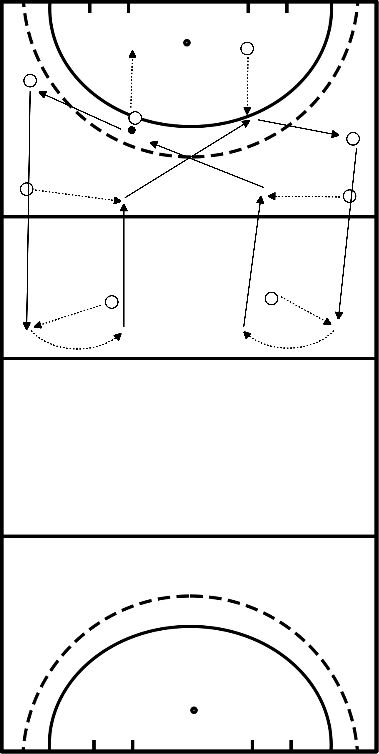
- 1 plays the ball using the bar to 2
2 runs in, controls the ball, moves towards the axis of the pitch and plays via the bar to 3
3 runs in, takes on and plays to the running-through number 2
2 Takes on and shoots (high) on target
Same for 4,5,6 if there are enough players for that
Press and hold 1-2-3-1 (or 1-2-3-4-5-6-1)
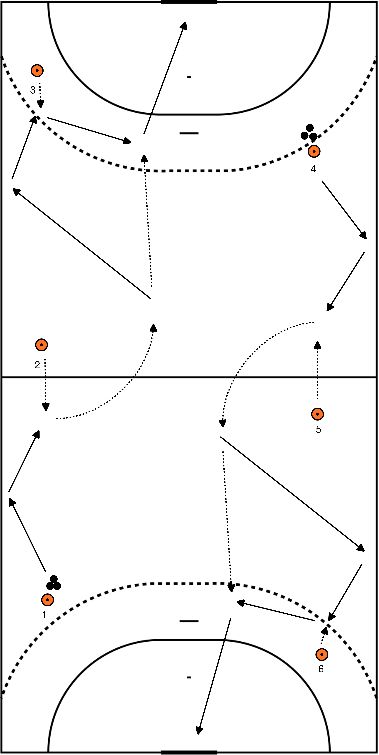
- 3 persons stand at the pilons and try not to let the player in the middle touch the ball.
- It is important that the diagonal pass is not made possible.
- So the players without the ball have to stand in the corners compared to the player with the ball.

Variation:
- Attacker plays to defender, and plays the ball back to the attacker.
- Then the attacker is allowed to attack towards goal.
- At 1, the ball begins and passes to the defender who then passes it to the out-going attacker.
- From there it is 2 to 1
- See number 2, only the players remain and it becomes a 4 against 2.
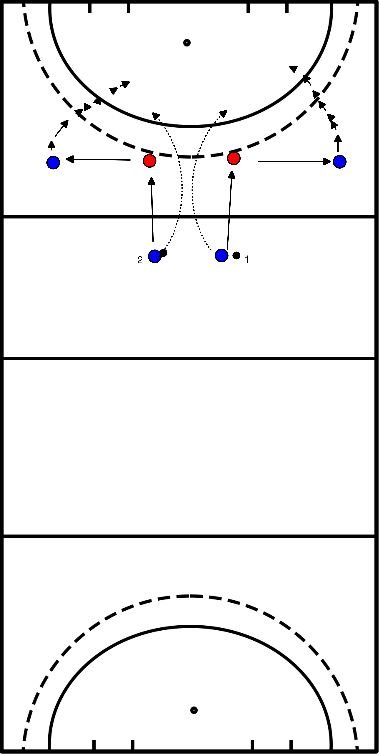
- There is one tigger without ball and two players without ball.
- It is thrown over accurately, whoever has the ball, can be tagged, a player without ball can not be tagged.
- The ball may be held for a maximum of ten seconds.
- If the tagger has intercepted a ball, the ball goes out of play.
- If you are tagged, you go to the side when no. 2 comes to the side, no. 1 goes back into the game
- Put out a square of 10 by 10 meters.
- A player is placed at 3 pilons.
- One pilon remains empty.
- The player with the ball plays to the pilon without a player.
- The player standing diagonally runs to the pilon and receives the ball. And so on.
- In this way, the next goal is reached:
- a lot of movement,
- playing while running
- take it in motion.
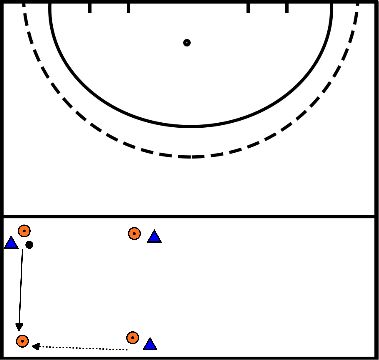
- The children run through the room in pairs.
- One child tries to follow the other.
- Variation
- The child at the front has to suddenly change tempo.
- The child in front must always change direction sharply.
- Groups of four or five children.
- Groups of four or five children and when the signal is given, the one in the back sprints to the front and then leads the rest.
- There are all kinds of obstacles in the field, such as mats, hoops and pilons.
- The trainer leads the way along these obstacles, the children follow him.
- Variation
- The children run in pairs along these obstacles.
- They run backwards.
- They run while taking sideways steps.
Aim
- A game is not only fun, you also learn a lot from them.
Set up
- Very simple: 2 goals, some vests and some balls.
- Surely no more explanation is required?
- This kind of game isn't really for training something specific (e.g. playing outside with a box in the middle), but just to have fun.
- If a team goes loses way too easy, you can enter the rule that they have to pass 3 times before they can score.
- Or you can make that team's goal smaller.
INSTRUCTIONS
- 2 teams
- 5 players per team
- 3 goals per team
- 2 yellow independent goals in the centre of the pitch
- Game: team blue against team red.
- Team red scores at one of the 3 blue pilons and team blue scores at one of the 3 red pilons.
- When the ball goes through one of the two yellow goals, the goals turn around.
- Team blue scores at the blue pilons and team red scores at the red pilons.
- When the ball goes through one of the yellow goals again, it turns around again.
AREAS OF CONCERN
Ball possession Take a good look at which of the 6 goals there's a lot of free space
Not in ball possession Trap the player with the ball from multiple sides









